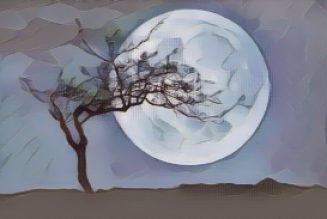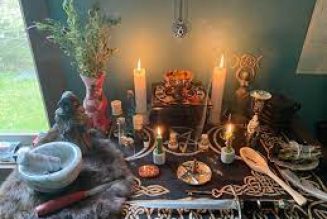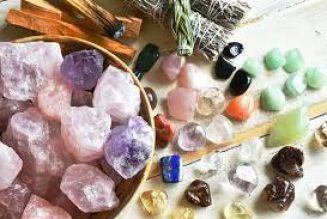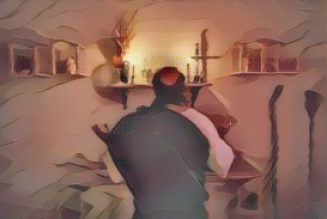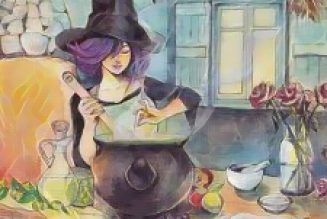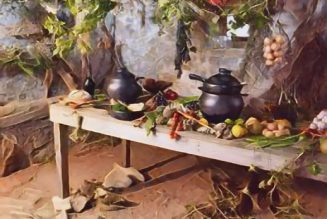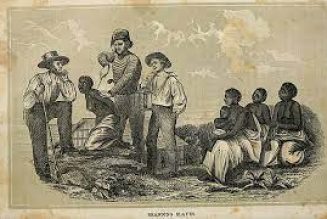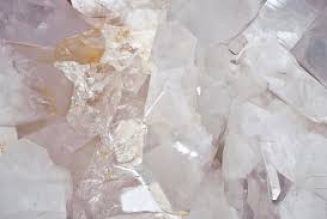The Crone, also known as the Hag of Winter, is a figure found in various mythologies and folk traditions. She is often depicted as a powerful and elemental force, associated with winter, transformation, and the cycle of death and rebirth. The Crone appears under many names, including Ceridwen, Hecate, Frau Gauden, Perchta, Nicneven, Reisarova, Frau Holda, Befana, the Hag of Beare, Babushka, Beira, Gyre-Carline, Mag Moullach, Gentle Annie, Lussi, and Saelde, among others.
In Scotland, she is called the Cailleach Bheur, or ‘The Blue Hag’, described as having a blue face and white hair. She is said to carry a holly staff and is often accompanied by a carrion crow. According to tradition, she moves across the land during winter, freezing the ground and withering plants. The whirlpool of Corryvreckan is referred to as her cauldron, where she washes the ‘plaid of old Scotland’ until it is white with snow. In Germany, Frau Holda (or Frau Holle) is believed to make it snow by shaking out her feather pillows. In Leicestershire, Black Annis is a blue-faced hag associated with the Dane Hills.
Winter is traditionally viewed as a time of death for plants, animals, and humans who cannot survive the season. The Hag of Winter is therefore often considered a death goddess and a collector of souls. In many myths, she leads the Wild Hunt, a spectral procession through the night sky, gathering the souls of the recently deceased. In Norse mythology, these figures are known as the túnridur, or ‘hag riders’, and the gandreid, or ‘witch ride’. In Norway, the goddess Reisarova leads the aaskereida, a host riding black horses with ember-like eyes. In Germany, the Furious Host is led by Frau Holle, Percht, or Berchta. In Slovenia, the leader is called Zlata Baba, or ‘Golden Crone’.
Some traditions, such as those in Tyrol, state that encountering the Wild Hunt led by Berchta could induce a trance, after which a person might gain the ability to predict the next harvest. This highlights a connection between winter, death, and fertility. Perchta is said to fertilize the land by ploughing it underground, while the souls of deceased infants, called heimchen, water the fields. The Crone is regarded as the guardian of the seeds that lie dormant in the earth, holding the potential for the next year’s harvest.
The portrayal of the Crone in mythology is often more formidable than the modern stereotype of the wise, gentle old woman. In many stories, she is depicted as a powerful and essential figure, not limited by age or societal expectations. This contrasts with more recent interpretations influenced by patriarchal traditions, which tend to diminish her role.
During winter, when the landscape is bare and stripped of excess, the underlying structure of nature becomes more visible. This period is associated with the deeper knowledge and elemental power attributed to the Crone, who is sometimes referred to as the ‘crowned one’ or the ‘veiled one’.














